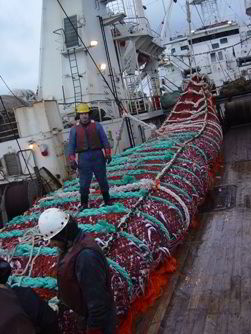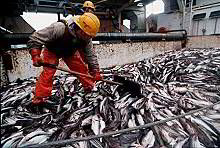NOAA fisheries researchers released scientific data from their 2009 bottom trawl and mid-water acoustic surveys of pollock in the Bering Sea.
One survey index is lower than expected based on the 2008 population analysis, while the other is higher. The 2009 surveys confirm the population is low and indicate the number of incoming young fish may be down.
“The pollock spawning biomass was well above average for a decade starting in 1993, but has since declined to below target levels,” said Doug DeMaster, director of NOAA’s Alaska Fisheries Science Center.


